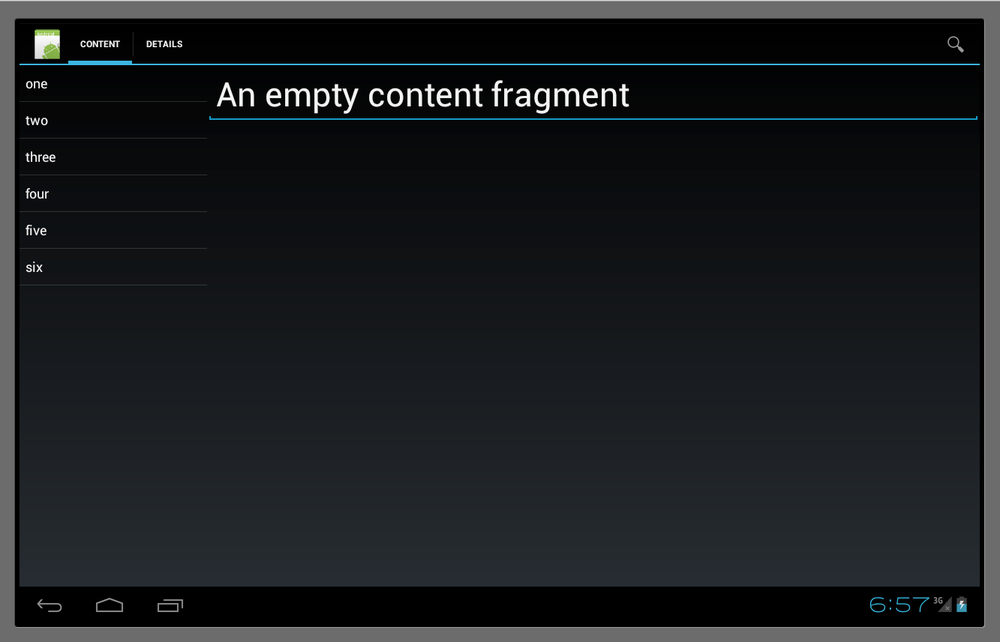Chapter 11. Building a User Interface
This chapter will enable you to connect APIs and tools with the user interface design process. Android’s user interface classes and the tools in the SDK were designed to help you conveniently create easy-to-use Android applications.
The tools Android provides for creating user interfaces enable an
infinite variety of combinations. The APIDemos example, and other example
programs in the SDK, contain several examples of the different ways
Android’s user interface classes, especially Activity and
Fragment, can be used. But it’s up to you to combine
these examples into an app.
The example code for this chapter will implement up-to-date user interfaces following best practices in user interface implementation, illustrate the most important user interface classes, and provide logging and instrumentation to help you understand what is behind what happens on the screen.
The visible result from this example will look like the screen in Figure 11-1 on a tablet.
On a handset, it will look like the screenshot in Figure 11-2.
The same code runs in both cases. That is, all the decisions about the look of the user interface that depend on screen size are made at runtime, and almost all of those decisions are made by the Android system.

Figure 11-1. What your program will look like on a tablet screen
Top-Level Design
The “top-level” design of the user interface encompasses ...
Get Programming Android, 2nd Edition now with the O’Reilly learning platform.
O’Reilly members experience books, live events, courses curated by job role, and more from O’Reilly and nearly 200 top publishers.

